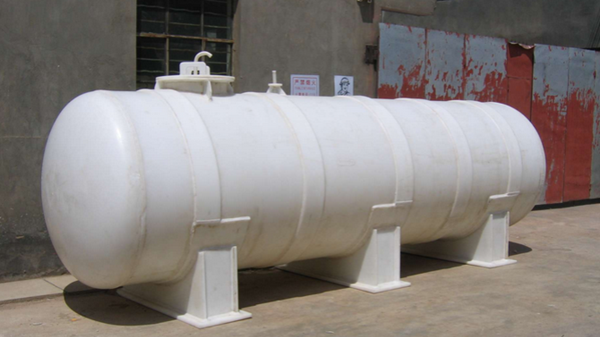With the improvement of industrial automation, it is essential to accurately measure the material level in storage containers. Especially in the liquefied gas industry, horizontal tanks are common storage equipment, and the precise control of the internal liquid level is directly related to production safety and economic benefits.
This article will explore the characteristics of liquefied gas horizontal tanks and analyze the application of radar level meters in them in combination with an actual measurement case.

Characteristics of liquefied gas horizontal tanks
1. Structural characteristics: Liquefied gas horizontal tanks are usually horizontally placed cylindrical structures, with hemispherical or ellipsoidal heads at both ends to withstand internal pressure. This design gives the horizontal tanks better stability and pressure-bearing capacity.
2. Material characteristics: Considering the corrosiveness and low-temperature characteristics of liquefied gas, the material of the horizontal tank is usually stainless steel or special alloy materials to ensure long-term safety.
3. Temperature and pressure: Liquefied gas horizontal tanks face the challenges of temperature changes and pressure fluctuations during storage, so they need to be equipped with corresponding temperature and pressure monitoring systems.

Radar level meters measure liquid levels by emitting microwave signals and receiving their reflected waves. When the microwave signal encounters the liquid surface, part of the signal is absorbed, while the other part is reflected back to the sensor.
By calculating the propagation time of the signal, the radar level meter can determine the height of the liquid level. In an actual liquefied gas storage project, in order to achieve real-time monitoring of the liquid level in the horizontal tank, a radar level meter was used for measurement. The following are the specific application steps:
1. Select a suitable radar level meter: According to the characteristics of liquefied gas and the size of the horizontal tank, a high-frequency radar level meter suitable for low temperature and high pressure environments is selected.
2. Installation and commissioning: Install the radar level meter on the top of the horizontal tank, ensure that it is vertically aligned with the liquid surface, and perform preliminary commissioning to calibrate the measurement accuracy.
3. Data acquisition and analysis: By connecting to the control system, the radar level meter can transmit liquid level data in real time. The operator can observe the liquid level changes through the monitoring system and make corresponding adjustments based on data analysis.
4. Maintenance and calibration: Regularly maintain and calibrate the radar level meter to ensure its long-term stable operation.

Through the analysis of the characteristics of liquefied gas horizontal tanks and the application of radar level meters in actual measurement cases, it can be seen that radar level meters have important application value in the field of liquefied gas storage.
It not only provides a non-contact measurement method, reducing maintenance costs and potential safety risks, but also provides high-precision liquid level data, providing reliable support for the control and optimization of the production process.
